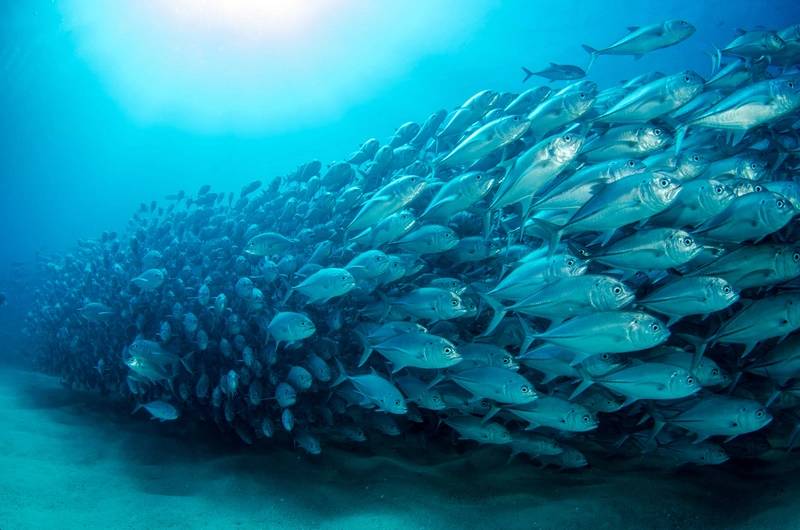Researchers from the University of Konstanz and the Max Planck Institute of Animal Behavior in Germany have worked out a way of watching what schooling fish are looking at when they swim together in near perfect synchrony – despite each fish having a limited view of its surroundings.
Using a newly developed 3D eye tracking methodology for interpreting video, the researchers can detect millisecond differences in a fish’s body posture and eye position to determine its field of view.
What they found was that each fish moves in such a way that one eye is always focused on the fish in front. The other eye is often looking entirely the other way.
The aim of the technology is to help clarify what sensory perceptions the fish base their decisions on as they move.
It’s of interest to the understanding of collective behavior and to the study of robotics.
“If you understand biology better, then you can build better robots. And better robots would help us to better understand biological systems,” said researcher Liang Li.
Other researchers at the university have considered the role of social networks in how groups respond to their environment. Again studying fish, they found that groups startled more frequently and many more fish participated in startle events when the fish perceived greater risk in the environment. However, the increased startle rates were not because individual fish were more sensitive to the danger cues. Rather, it was the physical structure of the group – how the individuals were positioned with respect to one another and how far apart they were – that was the best predictor of a startle event.
In other words, by changing the structure of the group, by coming closer together, the strength of the social connectivity among the individuals increased, allowing them to respond effectively and rapidly to changes in their environment, as a collective.
The researchers believe the results could benefit the development of new technologies for efficiently solving problems through collective intelligence, such as networked robots.
An earlier study looked at the impact that the individuality of a fish has on collective behavior. The researchers found that fish who tended to spent more time near others had lower individual speeds, had more central positions in the group and were much more likely to follow others. Groups composed of such individuals were more cohesive, moved less and were considerately less coordinated than groups of individuals that had less social and faster behavioral tendencies.
The research, conducted by the University of Konstanz, the Max Planck Institute of Ornithology and the University of Cambridge, could help explain and predict the emergence of complex collective behavioral patterns across social and ecological scales, with implications for conservation, fisheries and bio-inspired robot swarms. It may even help in the understanding of human society and team performance.

